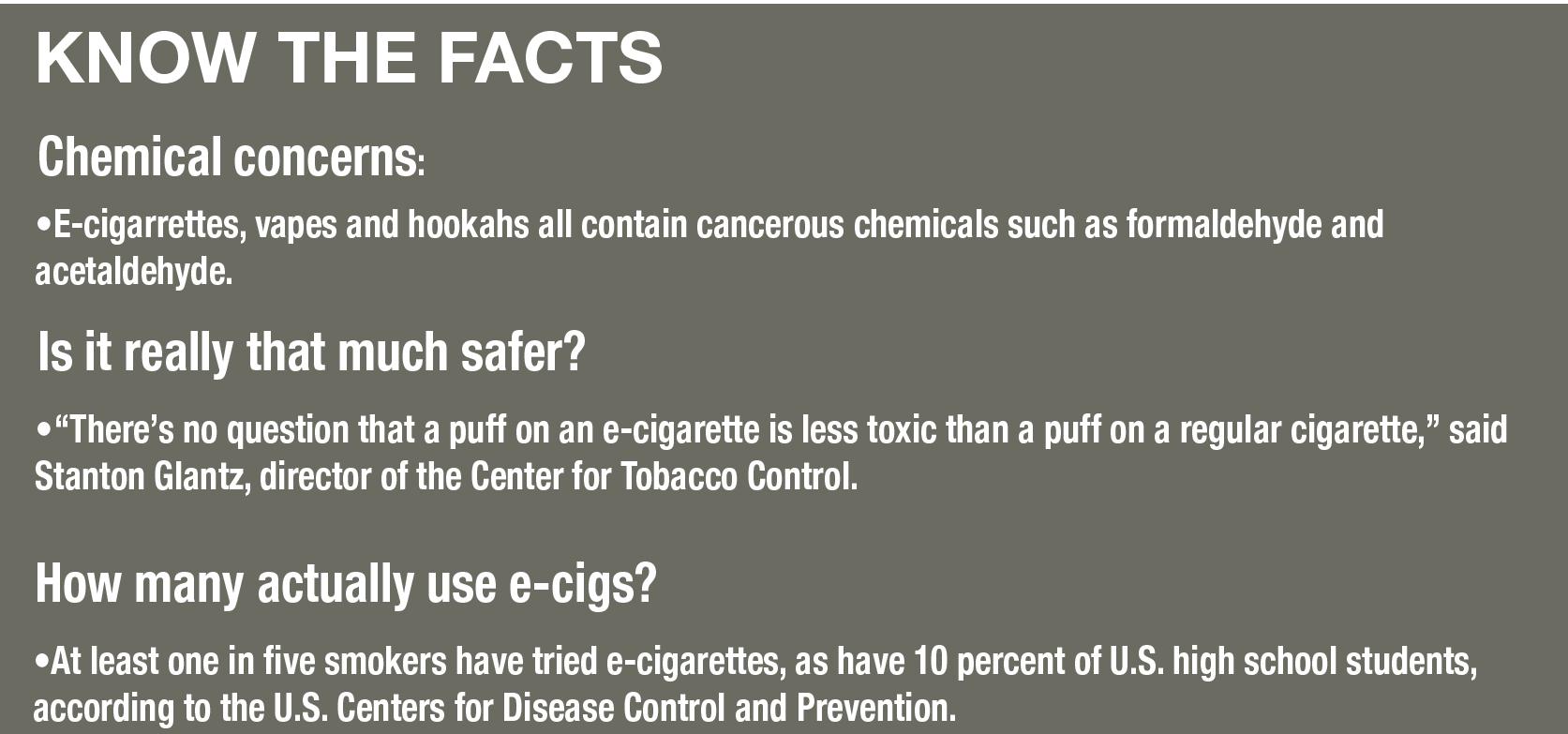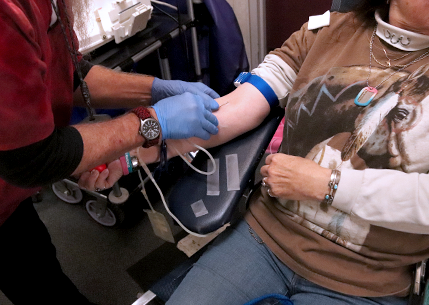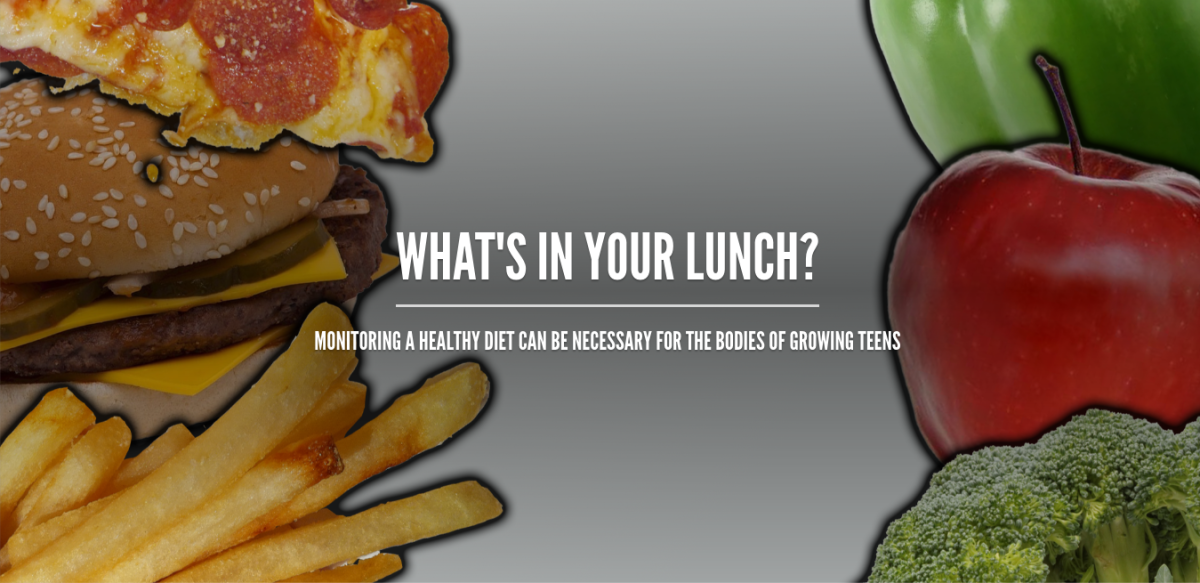Truths of vape pens, hookahs, and e-cigarettes
They appear on your friends’ snapchat stories; there is probably over 1 million vines of people using them. Almost every man-bunned, lumber-jacked bearded hipster smokes them. They have infiltrated our consumerist society; seeping from under apartment doors and from bars alike: vape pens, hookahs, and e-cigarettes. Each one has become a commodity in the young-adult community; the use of e-cigarettes has tripled in teenagers between the years of 2013 and 2014, according to Rob Stein, the Senior Editor for the NPR. Yet it’s hard to see the truth in all this mist. Are these things combatting the ol’ cancer stick, or are they adding to the problem?
HOOKAHS: It’s not easily conceived how the common assumption that hookahs are perfectly safe came about. It’s strange to hear that hookahs don’t contain anything dangerous when, in fact, they are just as dangerous as cigarettes. They still contain tobacco; however, the form of tobacco used in hookahs is called shisha– a thick, moist, sticky tobacco that has been soaked in honey or molasses. The water found in the bowl at the bottom does not somehow purify the smoke: the water cools the smoke so it doesn’t burn when it reaches your lungs. Hookahs can still lead to lung cancer– sometimes faster than just smoking cigarettes because a hookah session of 45 to 60 minutes can “expose the smoker to approximately the same amount of tar and nicotine as one pack of cigarettes,” according to the University of Maryland Health Center.
E-CIGARETTES: Although exempt from tobacco, these little electronic sticks still contain nicotine– an addictive drug that is basically like caffeine on steroids. The purpose of e-cigs are to help people wean themselves from actual cigarettes by still giving them a dose of nicotine while still keeping out all the other carcinogens that accompanies smoking tobacco. Yet Tobias Schripp, who has studied e-cigs at Fraunhofer Institute in Germany, told the Washington Post that he found “that nicotine and propylene glycol— a compound used in fog machines— can be found in e-cigarette exhalations.” So it isn’t just H2O and Nicotine. But, like argon in the atmosphere, this emission is a trace gas. So, although it may be linked to a fog machine’s mist, nobody is claiming that this is really bad for you. All minor faults get swept under the rug because of how condemned cigarettes have become: anything is better than smoking.
VAPE PEN: Characteristically claimed to just be “water vapor,” vape pens are a subcategory of the e-cigarette name. Usually a larger item than your regular e-cig, they have a refillable cartridge where you store the flavoured liquid. The syrup contains the nicotine (although some purposely ditch the additive) along with propylene glycol or vegetable glycerin, all of which have no conclusive research as to whether they are completely harmful. There are over 150 flavors–ranging from blueberry to coffee to cotton candy. Much like e-cigs, they run on a battery, hence the “e” in e-cig. There has been some reports of the battery melting in pockets and burning the owner, but otherwise, all research is not definitive.








